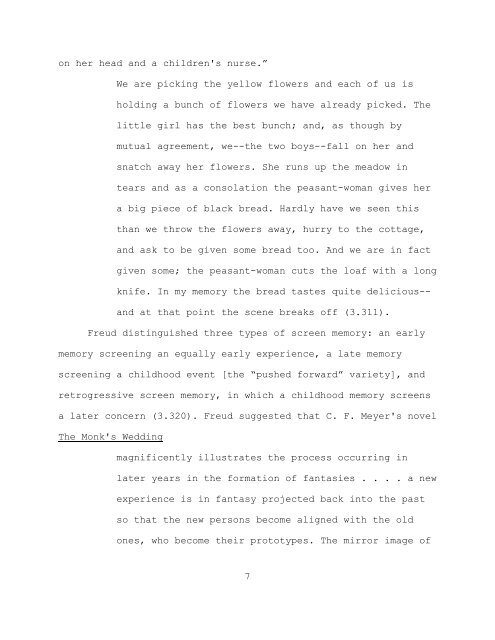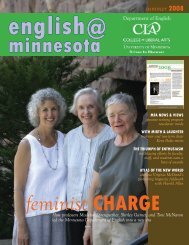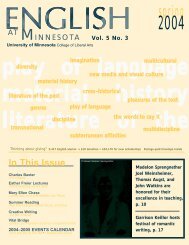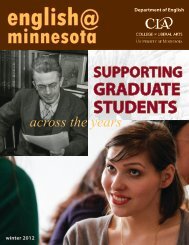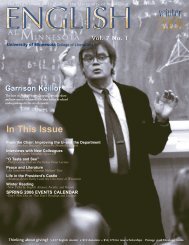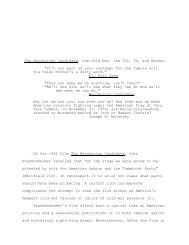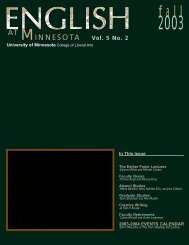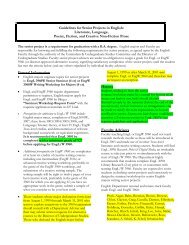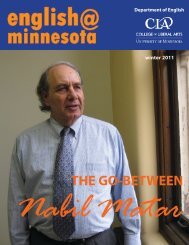Screen Memory - Department of English
Screen Memory - Department of English
Screen Memory - Department of English
Create successful ePaper yourself
Turn your PDF publications into a flip-book with our unique Google optimized e-Paper software.
on her head and a children's nurse.”<br />
We are picking the yellow flowers and each <strong>of</strong> us is<br />
holding a bunch <strong>of</strong> flowers we have already picked. The<br />
little girl has the best bunch; and, as though by<br />
mutual agreement, we--the two boys--fall on her and<br />
snatch away her flowers. She runs up the meadow in<br />
tears and as a consolation the peasant-woman gives her<br />
a big piece <strong>of</strong> black bread. Hardly have we seen this<br />
than we throw the flowers away, hurry to the cottage,<br />
and ask to be given some bread too. And we are in fact<br />
given some; the peasant-woman cuts the loaf with a long<br />
knife. In my memory the bread tastes quite delicious--<br />
and at that point the scene breaks <strong>of</strong>f (3.311).<br />
Freud distinguished three types <strong>of</strong> screen memory: an early<br />
memory screening an equally early experience, a late memory<br />
screening a childhood event [the “pushed forward” variety], and<br />
retrogressive screen memory, in which a childhood memory screens<br />
a later concern (3.320). Freud suggested that C. F. Meyer's novel<br />
The Monk's Wedding<br />
magnificently illustrates the process occurring in<br />
later years in the formation <strong>of</strong> fantasies . . . . a new<br />
experience is in fantasy projected back into the past<br />
so that the new persons become aligned with the old<br />
ones, who become their prototypes. The mirror image <strong>of</strong><br />
7


